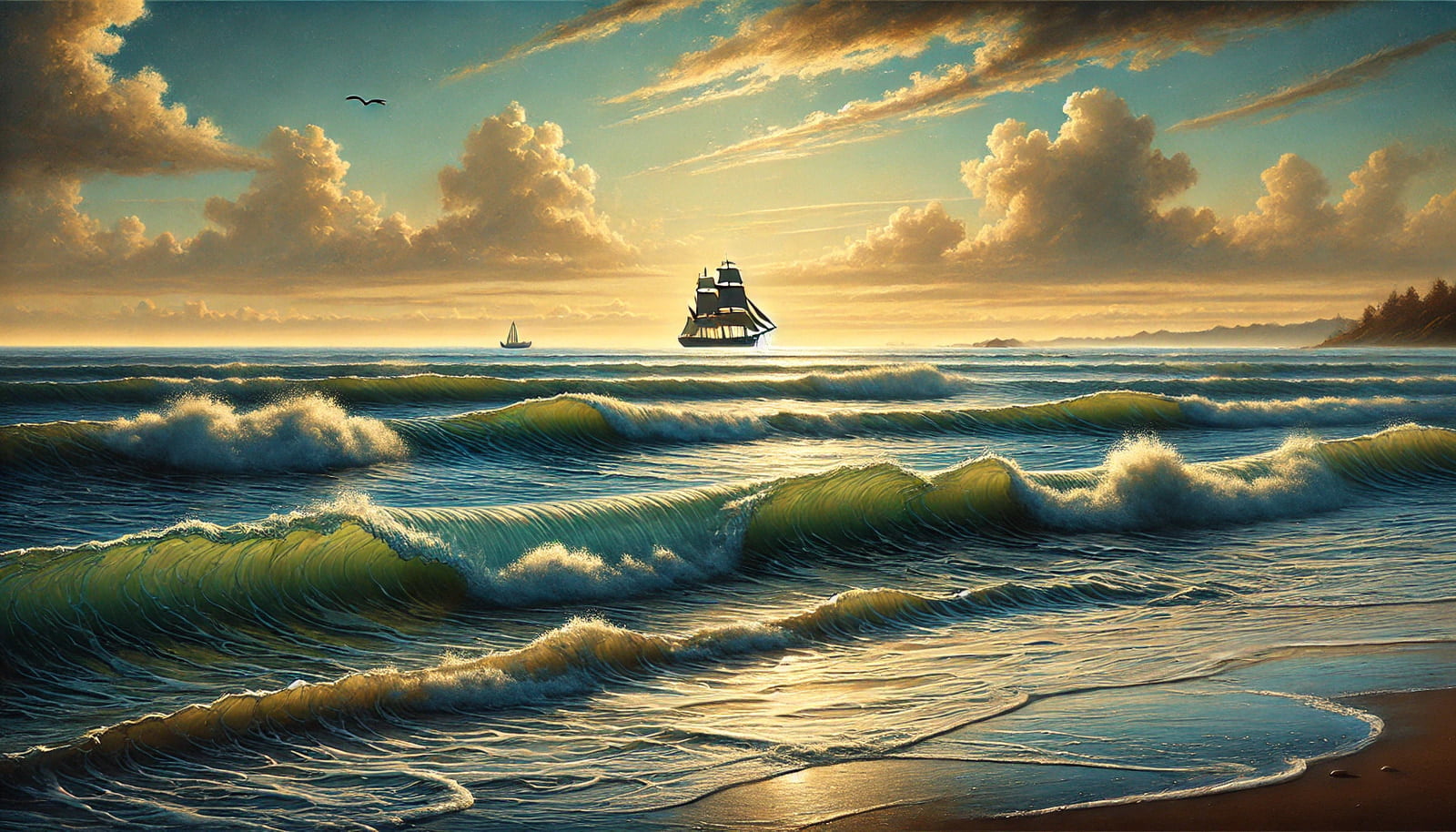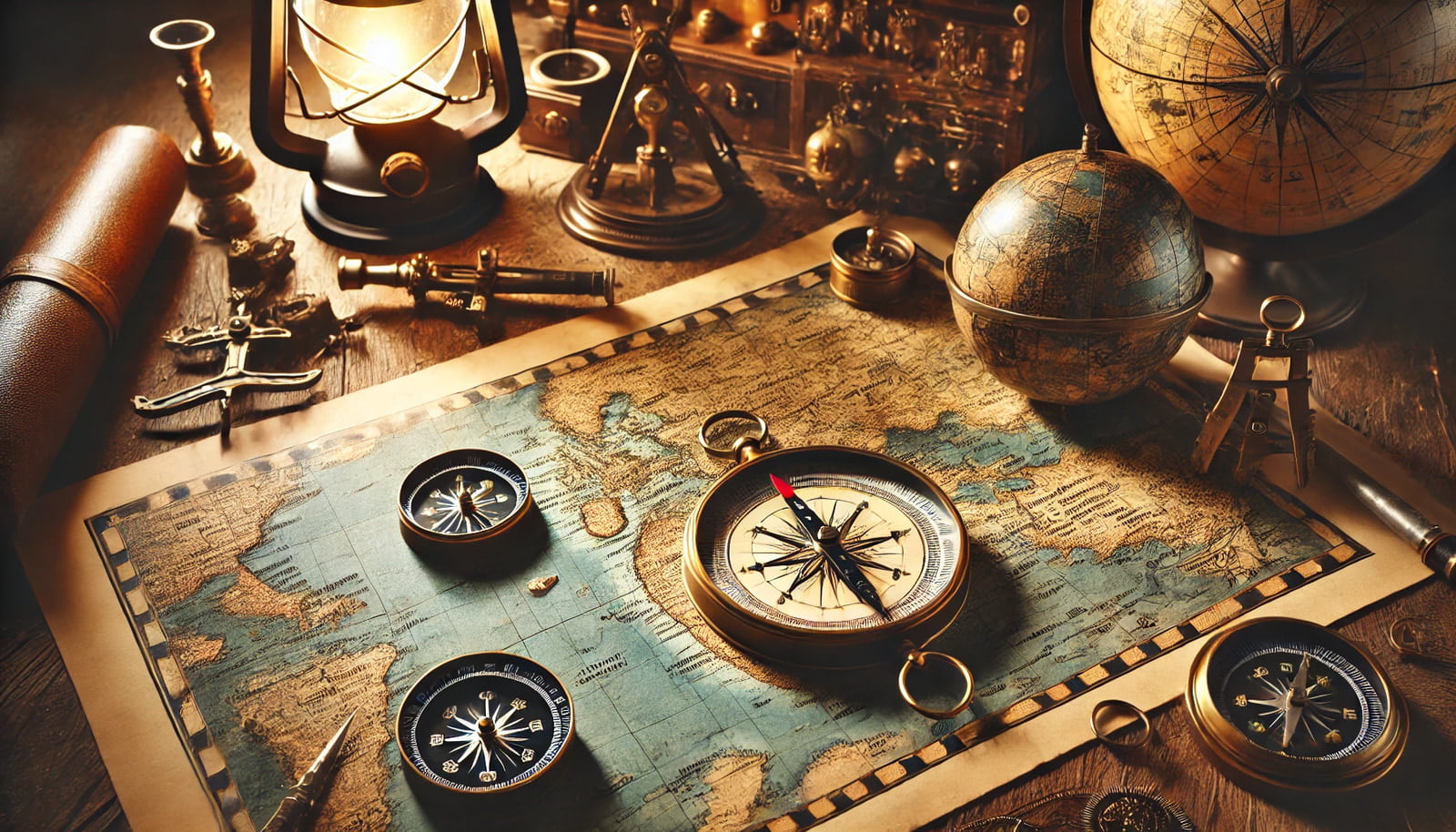
Oceans cover about 71% of our planet, and beneath their waves lies a complex system of moving water called ocean currents. These currents, like vast underwater rivers, have a profound effect on our climate, ecosystems, and, importantly, global shipping. Understanding how ocean currents work and how modern ships harness these forces is essential for global trade and environmental preservation.
What Are Ocean Currents?
Ocean currents are continuous, directed movements of seawater that flow in Earth's oceans. They can occur on the surface or deep below and are influenced by various factors such as:
- Wind: Winds are one of the main drivers of surface currents. The Earth's rotation and wind patterns create circulating water movements known as gyres.
- Earth's Rotation (Coriolis Effect): As the Earth rotates, the Coriolis effect causes currents to turn to the right in the Northern Hemisphere and to the left in the Southern Hemisphere, giving currents their circular motion.
- Temperature and Salinity Differences: Warm water tends to move toward cooler regions, and more saline water (heavier) moves toward less saline areas. This creates thermohaline circulation, which helps in deep-water current formation.
- Tides and Gravitational Forces: The gravitational pull of the moon and the sun generates tides, which also contribute to water movement near coastlines.
Types of Ocean Currents.
- Surface Currents: These are primarily driven by wind and occur in the upper 400 meters of the ocean. Major surface currents include the Gulf Stream (in the North Atlantic), the Kuroshio Current (in the North Pacific), and the Antarctic Circumpolar Current.
- Deep Water Currents: These currents are formed by differences in water temperature and salinity, leading to a phenomenon called "thermohaline circulation." These deep currents play a vital role in transporting heat and nutrients around the globe.
Ocean Currents and Climate.
Currents are an essential part of the Earth's climate system. For instance, the Gulf Stream transports warm water from the Gulf of Mexico up the eastern coast of the United States and across the Atlantic Ocean to Europe. This warm water significantly affects the climate of Western Europe, making it milder than other regions at similar latitudes.
Conversely, cold currents like the California Current cool coastal regions by bringing colder water from the Arctic southward. These temperature exchanges are critical in regulating global weather patterns, and any significant disruption to these currents could have dramatic climate impacts.

How Shipping Boats Use Ocean Currents.
Ocean currents don’t just influence weather patterns; they are also crucial for maritime navigation. Since the early days of sailing, mariners have used currents to their advantage, and today, modern shipping vessels still rely on this knowledge to reduce travel time and fuel consumption.
- Time and Fuel Efficiency: Modern shipping routes are designed to leverage ocean currents for optimal speed and efficiency. By moving with favorable currents, ships can cut down travel time and reduce fuel consumption, lowering the cost of transport. For instance, a ship traveling eastward across the Atlantic Ocean might use the Gulf Stream to boost its speed. In some cases, this can result in fuel savings of up to 20%.
- Major Shipping Routes: Many of the world’s busiest shipping lanes align with major ocean currents. The North Atlantic Ocean route, for example, connects Europe and North America and overlaps with parts of the Gulf Stream. Similarly, in the Pacific Ocean, routes between Asia and North America cross the Kuroshio Current. Shipping companies strategically plan their voyages to take advantage of these natural highways.
- Environmental Benefits: Using ocean currents to aid in ship propulsion doesn’t just save money—it also reduces environmental impact. By optimizing routes and decreasing fuel usage, shipping companies can lower their carbon emissions, contributing to cleaner oceans and a reduced carbon footprint.
- Challenges of Navigating Currents: While ocean currents are generally beneficial, they can also present challenges. Strong currents can make docking and maneuvering in ports difficult, especially near coastal areas where local currents may differ from major oceanic ones. Storms and changing wind patterns can also cause currents to shift, requiring ships to make course adjustments.
- Historical Navigation: Before modern engines, sailors on clipper ships relied heavily on ocean currents and trade winds to navigate the high seas. The Portuguese and Spanish explorers of the 15th and 16th centuries, such as Vasco da Gama and Christopher Columbus, used their knowledge of ocean currents and winds like the trade winds to explore new territories and establish trade routes across the globe.
Technological Advancements in Current Detection.
Today's ships are equipped with advanced technology, including satellite navigation systems and real-time current data, that allow captains to accurately plan routes based on ocean conditions. The development of tools such as the Global Positioning System (GPS) and Ocean Surface Current Analyses Real-time (OSCAR) provides up-to-date information on ocean surface currents, helping vessels avoid unfavorable currents or storms.
With this technology, captains can adjust their routes dynamically, selecting the best currents to maximize efficiency and safety. For example, they can avoid turbulent currents caused by adverse weather or steer clear of seasonal events like monsoons or El Niño, which can cause massive shifts in oceanic patterns.
The Future of Shipping and Ocean Currents.
As shipping companies increasingly focus on sustainability, leveraging ocean currents for fuel efficiency and route optimization will play an even more critical role. Additionally, ongoing research into ocean current patterns and their links to climate change could offer new opportunities to harness their energy.
There are also emerging technologies, like wind-assisted propulsion systems, that might take advantage of both wind and current forces, merging ancient sailing knowledge with modern technology. By reducing reliance on traditional fuel sources, the shipping industry could see a shift toward greener, more sustainable practices.
Conclusion.
Ocean currents are not just vital for Earth’s climate; they also serve as essential highways for global trade. By understanding and harnessing these vast flows of water, shipping companies can save time, reduce fuel consumption, and lower emissions. The deep connection between ocean currents and maritime navigation demonstrates how even the most ancient forces of nature continue to shape modern industry, offering an elegant balance between nature and human technology.
As our understanding of ocean currents grows, so too will the opportunities for ships to navigate these waters more efficiently, ensuring that the world's goods continue to flow across oceans with minimal impact on the environment.


